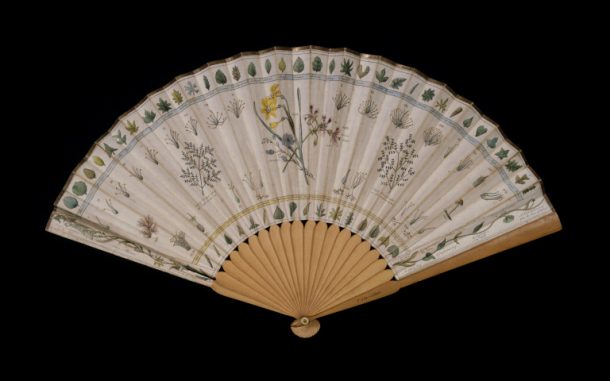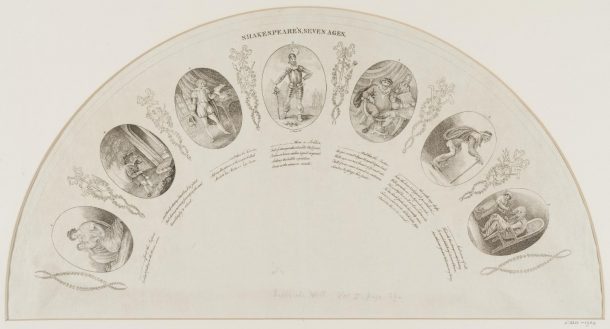
Exactly a 100 years ago today, British women gained the right to stand in Parliament. In celebration of this important day, assistant curator Kirsty looks back at an 18th-century, female fan maker.
Written by Kirsty Hassard, Assistant Curator in Textiles & Fashion
The Fashioned from Nature exhibition features a selection of beautiful fans, ranging in date from the late 17th to early 20th century. The costly materials range from feathers and mother-of-pearl to ivory and lace. However, one of the most interesting fans is by far one of the simplest, a fan made from paper and box wood. Named ‘The Botanick Fan’, it depicts botanical drawings of the sexual anatomy of plants arranged according to the Swedish botanist Carl Linneaus’ classification. The name of the fan comes from lines of a poem printed on the leaf, The Botanic Garden by Erasmus Darwin, grandfather of Charles Darwin.
The Botanic Garden was intended to pique the readers’ interest in science whilst educating them at the same time. Whereas Linneaus’ classification focused on male plants, Darwin gave female plants a central role. It has been argued that the poem encouraged women to engage in scientific pursuits.

Darwin supported female education. In ‘A Plan for the Conduct of Female Education in Boarding Schools’ (1794), written as advice to his two daughters, the Misses Parker, who had opened a school in Ashbourne in 1794. He recommended that the girls should learn botany, chemistry, mineralogy, and short hand, and should take plenty of outdoor exercise.
The fan would have directly appealed to female readers of The Botanic Garden, and used as a way of showing their intellectual interests. It was made in 1792, and is a good representation of the fan-making industry in London at the end of the 18th century. Fans were smaller and less elaborate by this time, reflecting fashions in dress.
What makes it more significant is that it was signed by its maker, a female fan maker named Sarah Ashton. Ashton owned a business at number 28, Little Britain, in the City of London which was traditionally an area for printmakers and booksellers. Sarah Ashton was not the only female fan maker working in London at this time: her contemporaries are represented in the records of their guild – the Worshipful Company of Fan Makers. However, the fans they made are lost, or their names have been obscured. Sarah Ashton’s output, in the collections of the V&A and British Museum, represents an unusual example of survival.

Fans like these were relatively cheap to make and buy. Women would have owned a number of them. They were ephemeral objects, intended to represent particular occasions or events. They would have been discarded and replaced easily with a more contemporary image.
The next post will celebrate another important centennial in women’s history by looking at the female founders of the Royal Society for the Protection of Birds.